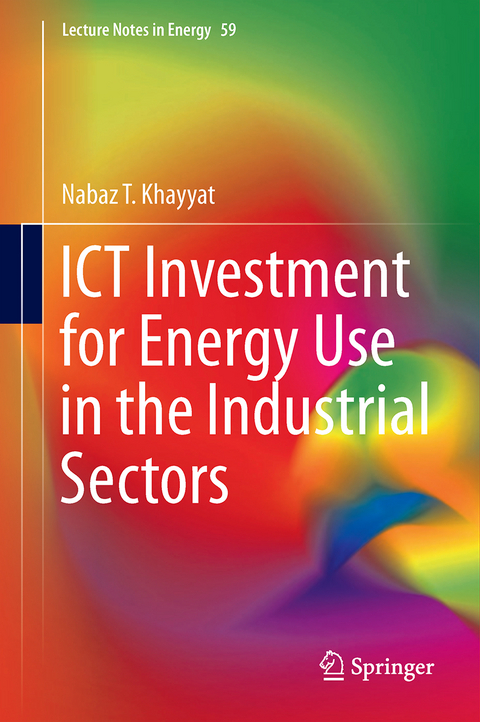
ICT Investment for Energy Use in the Industrial Sectors
Springer Verlag, Singapore
978-981-10-4755-8 (ISBN)
It addresses four key aspects of production and energy demand in manufacturing: first, it establishes the various relationships between different factors of production. Second, it investigates whether the energy demand in the industrial sectors in South Korea would be decreased or increased by substituting/complementing with other input factors such as ICT capital and labor. Third, it looks at sources of growth in the industrial sectors through decomposing the Divisia index based total factor productivity (TFP). Finally it provides appropriate policy recommendations based on these findings. The results of this study may provide industrial sectors’ stakeholders and environmental and industrial policy makers with a flexible model that has the capacity to assess outcomes of various policies under certain scenarios.
The factor demand methodology described in this book is very advanced and up-to-date. It can be used when teaching advanced graduate courses and in empirically advanced research. Therefore, it is highly relevant in both teaching as a main or supplementary text and in particular as a reference handbook in conducting empirical research. The focus on ICT effects on energy use makes this book an important addition to the existing literature on industrial development.
Nabaz T. Khayyat, received PhD in Economics, Swiss Management University, and PhD in Engineering, Seoul National University. He is an Engineering Economist, who worked for the UN for several years, as well as different international humanitarian organizations, also held a high ranked position with the Kurdistan Regional Government KRG as an Information Management Advisor in the Ministry of Agriculture and Water Resources. He is currently a faculty of Computer Science and Engineering department, and in Business and Management department at the University of Kurdistan Hawler, also he is an external faculty of University of Liverpool UK. His research field includes Energy Economics, Industrial Dynamics, Factor Demand Models and Production Risk, and Technological Demand forecasting. He is the author of the book titled “Energy Demand in Industry -What Factors Are Important” which has been published with Springer Publisher in 2015.
1 OVERVIEW.- 1.1 Introduction.- 1.2 Why this Study.- 1.3 Objectives.- 1.4 Significance of the Study.- 1.5 Research Design.- 1.6 Research Questions and Empirical Motivations.- 1.7 Assumptions and Limitations.- 1.8 Operational Definitions.- 1.9 Expected Results.- 1.10 The Structure of the Book.- 1.11 Summary.- Bibliography.- 2 ICT INVESTMENT AND ENERGY USE IN SOUTH KOREA AND JAPAN.- 2.1 Introduction.- 2.2 ICT Investment.- 2.3 Energy Use.- 2.4 Energy Efficiency.- 2.5 Summary.- Bibliography.- 3 ICT INVESTMENT AND ENERGY USE IN THE LITERATURE.- 3.1 Efficiency in the Use of Energy.- 3.2 ICT Investment and Economics Growth.- 3.3 ICT Investment and Energy Use.- 3.4 Summary.- Bibliography.- 4 THE FACTOR DEMAND MODELS AND THE THEORY OF PRODUCTIVITY.- 4.1 Historical Development of the Factor Demand Models.- 4.2 Industrial Demand Models for the Input Factors of Production.- 4.3 Inter-factor Substitutability and Complementarity.- 4.4 The Total Factor Productivity.- 4.5 Summary.- Bibliography.- 5THE EU KLEMS DATABASE.- 5.1 Data Source.- 5.2 Population and Sampling Strategy.- 5.3 Classification of the Industrial Sectors.- 5.4 Summary Statistics.- 5.5 Multicollinearity and Validation of Results.- 5.6 The Industrial Sectors’ Energy use Intensity.- Bibliography.- 6 THE IMPACT OF ICT INVESTMENT ON ENERGY USE: A COMPARATIVE STUDY BETWEEN SOUTH KOREA AND JAPAN.- 6.1 Introduction.- 6.2 Theoretical Model and Empirical Specification.- 6.3 Parameters Estimates.- 6.4 The Adjustment Speed.- 6.5 Deviation from the Optimal Values.- 6.6 The Own and Cross Price Elasticities.- 6.7 Conclusion.- Bibliography.- 7 PRODUCTIVITY ANALYSIS OF SOUTH KOREAN INDUSTRIAL SECTORS.- 7.1 Introduction.- 7.2 Development Stages in the Industrial and Technological Polices.- 7.3 Divisia Index.- 7.4 Theoretical Model and Empirical Specification.- 7.5 Determinants of the TFP Growth.- 7.6 Capacity Utilization Index (CUI).- 7.7 Price and Output Elasticities.- 7.8 Returns to Scale.- 7.9 Technical Change.- 7.10 The TFPGrowth.- 7.11 Output Growth.- 7.12 Conclusion.- Bibliography.- 8 OVERALL SUMMARY, HYPOTHESES TESTS, AND POLICY IMPLICATIONS.- 8.1 Introduction.- 8.2 The Research Questions and the Associated Hypotheses.- 8.3 Summary of Results and Policy Implications.- 8.4 Contribution to the Literature.- 8.5 Implications for Industry and Policy Makers.- 8.6 Conclusions, Practical and Policy Recommendations.- 8.7 Limitations of the Study and Recommendations for Further Research.- Bibliography.
| Erscheinungsdatum | 06.07.2017 |
|---|---|
| Reihe/Serie | Lecture Notes in Energy ; 59 |
| Zusatzinfo | 11 Illustrations, black and white; XIII, 164 p. 11 illus. |
| Verlagsort | Singapore |
| Sprache | englisch |
| Maße | 155 x 235 mm |
| Themenwelt | Mathematik / Informatik ► Informatik ► Datenbanken |
| Mathematik / Informatik ► Mathematik ► Finanz- / Wirtschaftsmathematik | |
| Naturwissenschaften ► Biologie ► Ökologie / Naturschutz | |
| Technik ► Elektrotechnik / Energietechnik | |
| Technik ► Maschinenbau | |
| Schlagworte | Energy economics in industry • ICT and energy • ICT and industrial growth • ICT investment in industry • Industrial energy use in South Korea • Industry and energy use in Japan • Total Factor Productivity (TFP) |
| ISBN-10 | 981-10-4755-3 / 9811047553 |
| ISBN-13 | 978-981-10-4755-8 / 9789811047558 |
| Zustand | Neuware |
| Haben Sie eine Frage zum Produkt? |
aus dem Bereich


